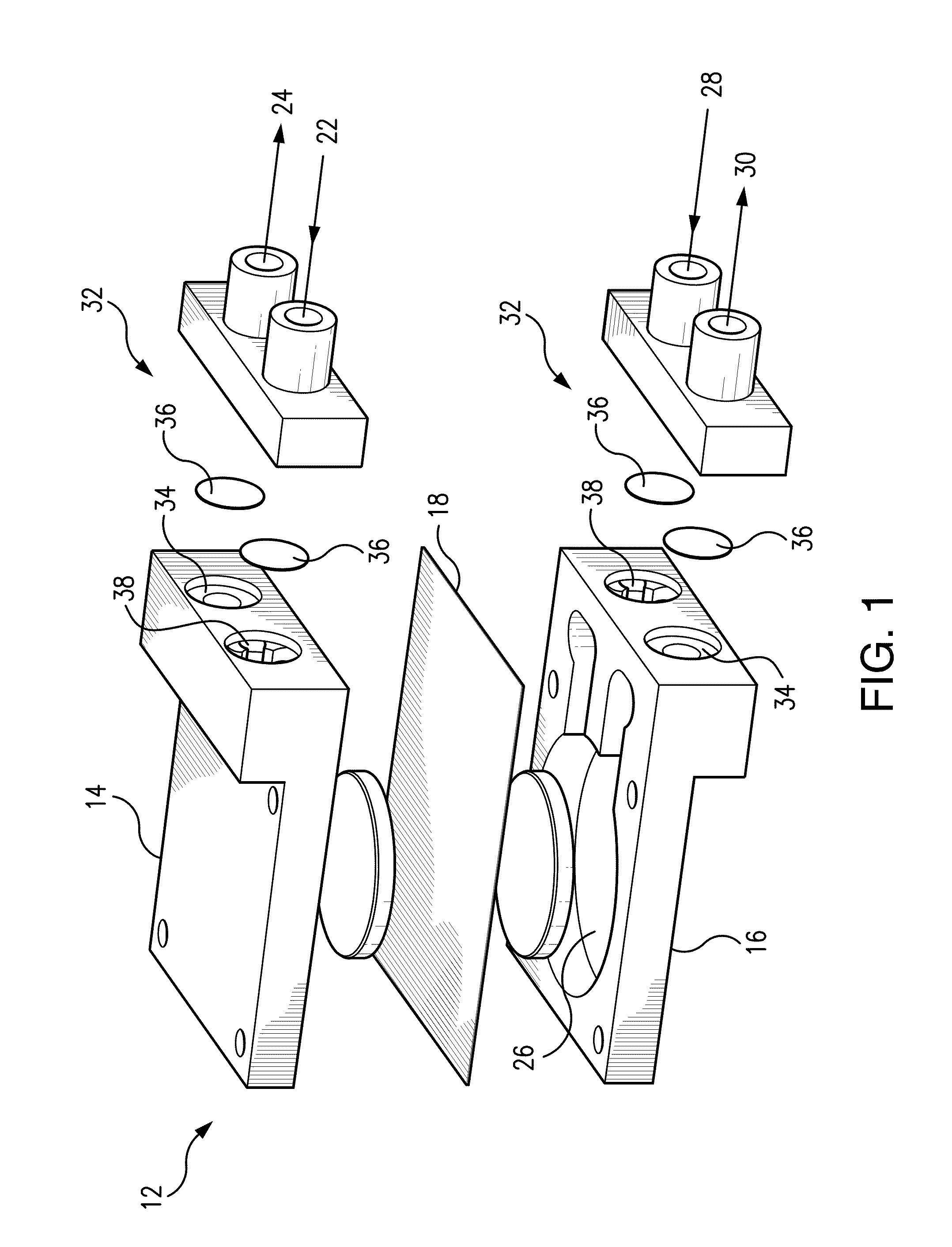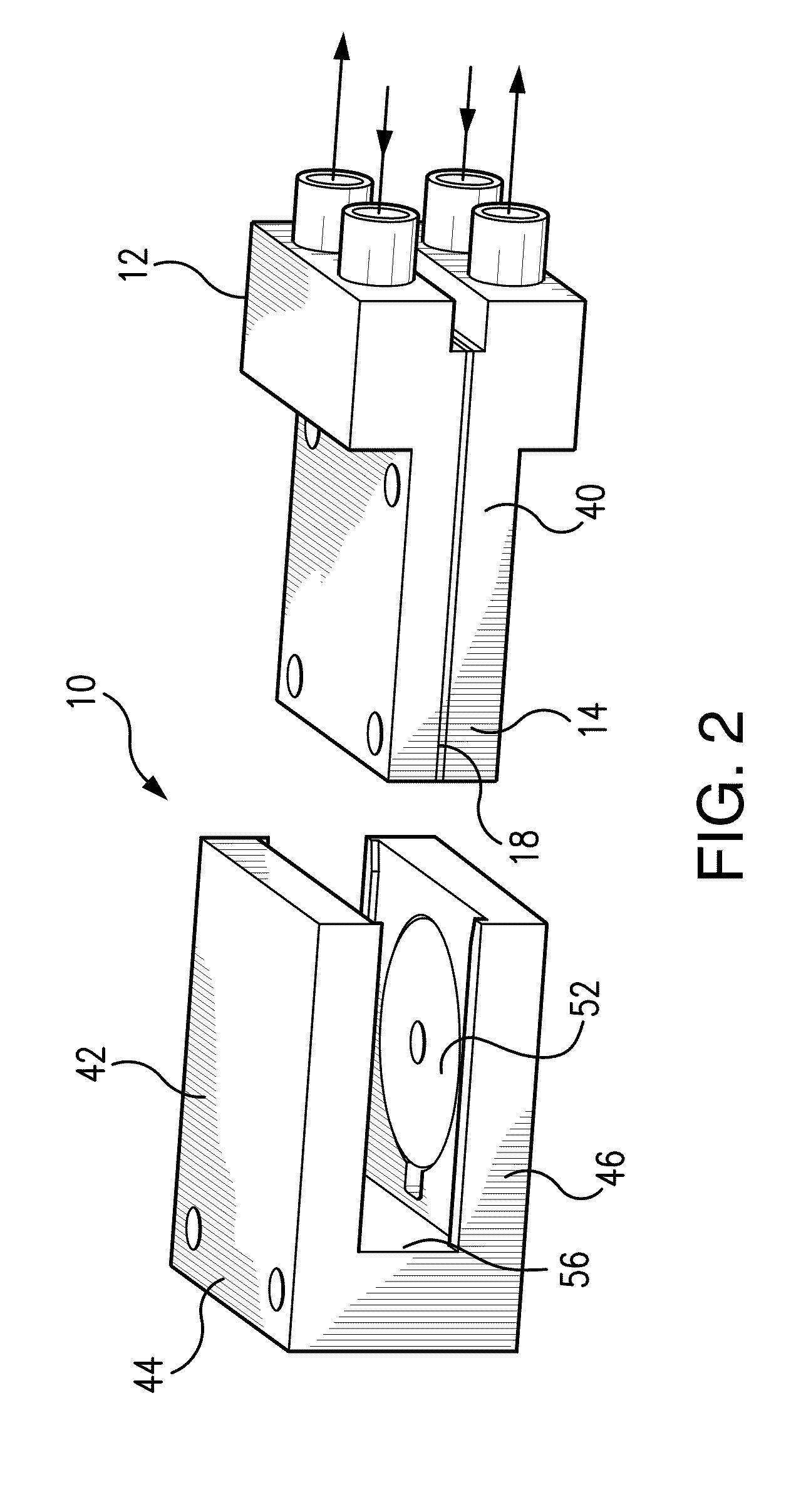Method of Making a Membrane for Use with a Flow Control System for a Micropump
- Summary
- Abstract
- Description
- Claims
- Application Information
AI Technical Summary
Benefits of technology
Problems solved by technology
Method used
Image
Examples
Embodiment Construction
[0076]Referring now to FIGS. 1 and 2, the micropump 10 of the present disclosure includes a pump assembly 12 having a first pump body 14, a second pump body 16 and a flexible membrane 18 disposed therebetween. The first pump body 14 defines a first body flow path and includes a first chamber 20 (shown in FIG. 4). The first pump body 14 further includes a first inlet 22 and a first outlet 24 in fluid communication with the first chamber. Likewise, the second pump body 16 defines a second body flow path and includes a second chamber 26. The second pump body 16 further includes a second inlet 28 and a second outlet 30 in fluid communication with the second chamber 26.
[0077]Several proposed actuation mechanisms for micropumps have been reported already, mainly including piezoelectric, electrostatic, electromagnetic, and thermo-pneumatic and shape memory alloy, etc. The majority of the micropumps employ piezoelectric or electrostatic actuation, which operate at a relatively high frequenc...
PUM
| Property | Measurement | Unit |
|---|---|---|
| Length | aaaaa | aaaaa |
| Length | aaaaa | aaaaa |
| Length | aaaaa | aaaaa |
Abstract
Description
Claims
Application Information
 Login to View More
Login to View More - R&D
- Intellectual Property
- Life Sciences
- Materials
- Tech Scout
- Unparalleled Data Quality
- Higher Quality Content
- 60% Fewer Hallucinations
Browse by: Latest US Patents, China's latest patents, Technical Efficacy Thesaurus, Application Domain, Technology Topic, Popular Technical Reports.
© 2025 PatSnap. All rights reserved.Legal|Privacy policy|Modern Slavery Act Transparency Statement|Sitemap|About US| Contact US: help@patsnap.com



